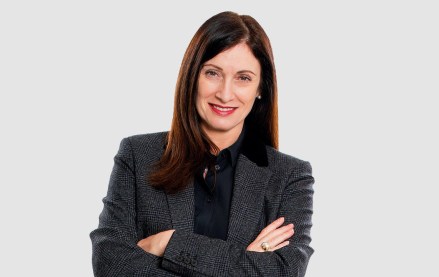How Netflix could up the ante for advertisers as it explores solutions to its ad tech conundrum

Earlier this year, it emerged that Netflix was exploring potentially adjusting its ad strategy after what can be considered a tricky start to the advertising business.
Sources said outcomes could include the streaming service overhauling its relationship with Microsoft, which has powered Netflix’s ad tech. Sources familiar with Netflix’s early conversations suggested they were a precursor to the streaming giant eventually building or buying its own ad tech.
Such developments can be seen as a tacit admission that things did not go as planned in the early phases of the Netflix-Microsoft partnership. After all, the streaming giant had to issue rebates to advertisers after its initial campaigns failed to live up to earlier expectations.
However, as one source recently told Digiday, Netflix’s recent series of moves demonstrate “they’re serious about the ads business,” and with that in mind just what does the streaming giant have to do to realize its earlier predicted $1 billion-plus advertising business?
Separate buy-side sources reported a “bumpiness” at the beginning of Netflix’s offering with one going as far as to say the launch was “shrouded in mystery” with confusion over the availability of inventory.
Separately, some commented that the utility of the Xandr ad server (one of Microsoft’s ad tech assets) did not live up to expectations — some of Netflix’s earliest in-housing conversations centered around a potential new ad server.
Meanwhile, others cited limitations around ad targeting and measurement, along with accompanying high CPMs, were also contributors to a disappointing start.
Mark Giblin, CEO of CTV campaign management platform LightBox, told Digiday the Netflix team demonstrated positive signs, such as a willingness to sign up to BARB, a panel-based measurement system used by TV buyers in the U.K.
“BARB measures overnight ratings, and when you think how you watch on-demand viewing in a different way, it can look as if shows are not as big as they really are,” he explained. “So, they took that risk on as that’s the [TV] currency [in the U.K.].”
Sources told Digiday that in the early phases of ads running on Netflix, campaign delivery was comparatively manual and third-party measurement wasn’t available.
Although, separate sources indicate its gradual opening up to third-party measurement is a sign that it intends to increase bidding volume. “This may have been Xandr-driven and a sign of intentions to trade programmatically,” added Giblin.
John Goulding, CSO at MiQ, an ad tech firm that worked on some of the early campaigns, told Digiday that Netflix’s original set-up to shy away from third-party ad tech, may have been a signal of its intentions to maintain its service as a premium media environment.
“It was about having a light payload of ads, a high frequency-capping experience and they were somewhat selective over what brands could run,” he explained. “The stuff that’s being rolled out incrementally that we’re really excited for is enhanced measurement, that will be a really big addition.”
Additionally, both Giblin and Goulding said that show-level targeting would prove an attractive proposition for advertisers, especially in a hyper-competitive marketplace where the likes of Disney, Comcast-owned Peacock, and Google’s YouTube are also upping the ante.
For MiQ’s Goulding, one key aspect for Netflix to focus on in the longer term is a data clean room.
“That really would be impactful, quite understandably, Netflix wants to wrap a lot of privacy-preserving features around the platform, and that would make it a really exciting proposition for advertisers,” he added.
“To layer-in first-party data [for a Netflix media buy] and look at things like conversion-attribution, and look at things such as reach and frequency beyond just the Netflix buy would be an enticing proposition.”
Several sources told Digiday that part of Netflix’s agenda has been to examine the prospect of potentially buying-in ad tech with some advising them to look on the public markets for potential acquisition targets.
Ciarán O’Kane, CEO of First Party Capital, told Digiday that Netflix’s advisers will likely be on the lookout for an ad server and supply-side platform and that an M&A route may be a sensible route to take.
“Building ad tech is really hard, you need to have the right DNA to know what’s going on,” he added, “If you were to look at companies then you could look at Roku, which has scale with its consumer product [and ad tech], or you could look at pure-play ad tech companies such as Magnite as it has an ad server and SSP.”
Meanwhile, some believe Netflix may look to perform a U-turn on its earlier decision to decline a partnership with Comcast’s ad tech specialist unit Freewheel — it is widely understood it turned down such a partnership over channel-conflict concerns — and just look at the ad tech on offer.
Tracey Scheppach, CEO of TV specialist consultancy Matter More Media, told Digiday such a more may be advisable for Netflix, especially when it comes to an ad server, arguably the most important ad tech.
“They have really premium inventory and if they get ad serving and measurement right it can all be addressable and fully accountable,” she added. “I think they have two ad serving options; Freewheel or buy someone.”
More in Media Buying

Omnicom confirms the pending exit of influential Annalect chief Slavi Samardzija
The CEO and architect of Omni departs, hinting at pending changes as Omnicon continues $13.5 billion IPG takeover bid.

WPP has its next CEO – but what do clients make of the heir apparent?
The ad industry’s hot take industrial complex went into overdrive upon yesterday’s WPP coronation. Clients are keeping their counsel, however.

Who is Cindy Rose, WPP’s insider-outsider pick for its next CEO?
The British holding company has named its next CEO — a Microsoft executive and board member of six years.








